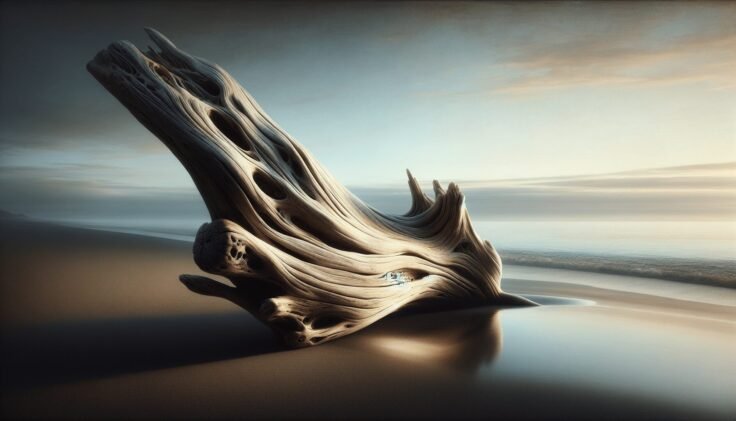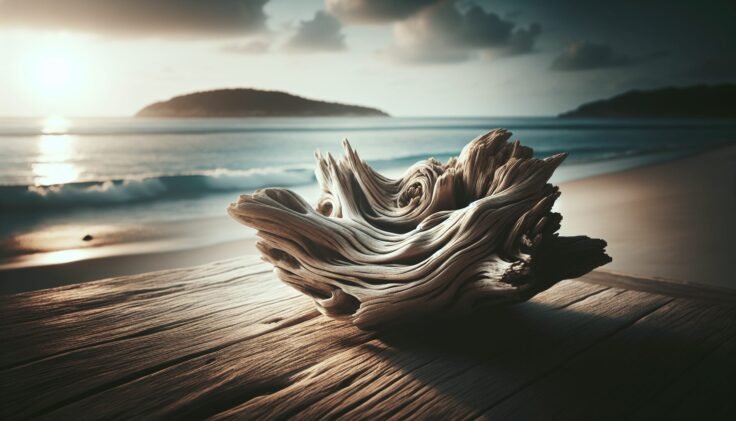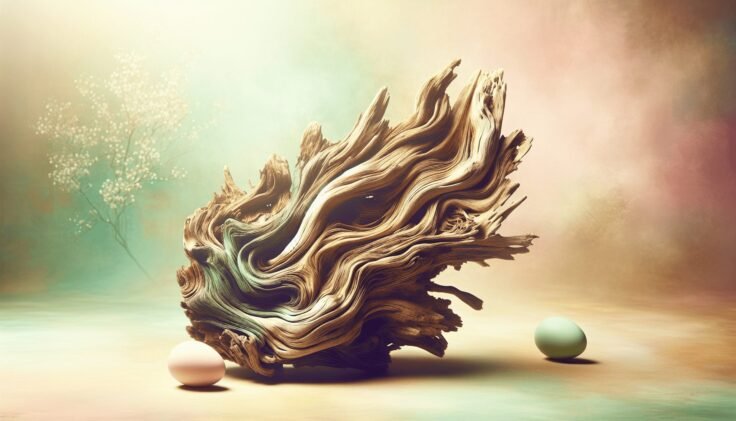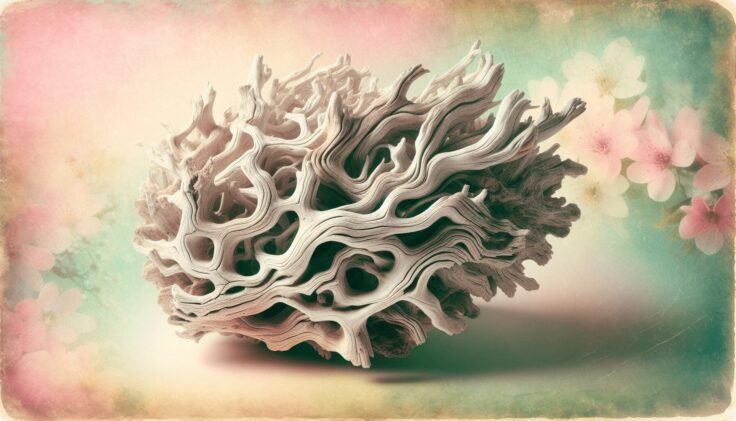Have you ever thought about how something as simple as driftwood could transform into objects of beauty and intrigue? It’s often overlooked or seen as a product of nature’s own journey, but driftwood holds stories untold, carrying secrets from the depths of oceans or the banks of lazy, winding rivers.

The Journey of Driftwood
Driftwood does not begin its life as a weathered sculpture or a gallery-worthy piece of art. Its journey is complex, beginning as a piece of wood from a tree that might have grown deep within a forest or along a riverbank. The wood becomes driftwood when it’s carried by water to a new location, molded by the elements, turning into what we recognize as driftwood.
The Origin of Driftwood
Where does driftwood start its journey? Typically, driftwood originates from trees that grow near rivers, seas, or any large bodies of water. These trees might be felled by storms, or their branches may break off and end up in the water. River currents and tides take over from there, transporting them to new destinations. Throughout this journey, driftwood is subjected to various natural forces, such as water, wind, and sun, each contributing to its unique appearance.
Transformative Forces of Nature
Driftwood is shaped by several natural forces. The main transformative force is water. As wood is carried by rivers or waves, water acts as a natural sculptor, smoothing surfaces, removing bark, and rounding sharp edges. Sunlight contributes to driftwood’s character by bleaching it, sometimes imparting white or grey tones. Wind can also add character by etching subtle patterns into its surface.
The Artistic Appeal of Driftwood
What makes driftwood so appealing compared to other types of wood? It’s the uniqueness and unpredictability of its form and texture. No two pieces of driftwood are alike because they undergo different journeys. This individuality makes driftwood a favorite among artists and craftspeople, prized for its uniqueness and the stories it signifies.
Uses of Driftwood
Driftwood is more than just a naturally weathered piece of wood; its uses extend both practically and artistically. From home décor to functional art, driftwood has found its way into many aspects of everyday life, as well as in remarkable artistic creations.
Driftwood in Home Décor
One of the most popular uses for driftwood is in home décor. Its rustic and organic feel brings a touch of natural beauty into any space. Here are a few common ways driftwood is incorporated into home design:
| Decor Item | Description |
|---|---|
| Driftwood Shelves | Built from longer, sturdy pieces, adding a natural floating element. |
| Centerpieces | Crafted from uniquely shaped pieces, sometimes combined with plants or candles for tabletop displays. |
| Mirrors | Driftwood frames create rustic mirrors for living spaces. |
Driftwood in Art
Driftwood offers artists an inspiring medium to express creativity. Artists often enjoy working with driftwood due to its irregular forms and natural beauty, challenging them to see potential in its shape and texture.
Sculptures
Artists create intricate sculptures by assembling pieces of driftwood, utilizing the wood’s twists and grains to inform the final piece. These sculptures can range from abstract forms to realistic representations like animals or human figures.
Wall Art
Driftwood is often used to create stunning wall art. By combining pieces of various shapes and sizes, artists can form intricate patterns or even three-dimensional art pieces that add dynamic elements to walls.
Functional Uses
Beyond its artistic and decorative appeal, driftwood also serves functional purposes. Its durability and lightweight nature make it ideal for certain applications:
- Furniture: Tables, chairs, or benches crafted from driftwood retain a natural elegance and often become the centerpiece of a room.
- Aquarium Décor: In aquariums, driftwood serves both practical and aesthetic purposes, offering fish places to explore and hide.
- Garden Features: Used in garden paths or as borders, driftwood complements natural settings, enhancing the garden’s organic feel.
Cultural Significance of Driftwood
Throughout history and across cultures, driftwood has held various symbolic and practical significances. For some cultures, it’s seen as a gift from the sea, carrying mystical properties or spiritual importance.
Driftwood in Oceanic Cultures
In Pacific Islander cultures, driftwood is often regarded as a sacred material. The ocean, a central element in many Oceanic cultures, is viewed as a source of life and wealth. Driftwood, being shaped and delivered by the sea, is seen as a bestowed gift.
Myths and Legends
Driftwood often features in myths and legends, symbolizing journeys, transformation, and resilience. It is sometimes depicted as a material carrying whispering sea deities’ secrets or messages from those who’ve traversed great waters.
Symbol of Sustainability
In modern times, driftwood also symbolizes sustainability. It is a naturally recycled material, requiring no industrial processing, which appeals to eco-conscious individuals seeking to reduce their impact on the environment.
How to Collect and Preserve Driftwood
If you’re inspired by driftwood and want to start your own collection, there are a few things to consider. Collecting driftwood can be a rewarding experience, but it’s essential to do it responsibly and preserve the pieces properly.
Responsible Collection
Before gathering driftwood, check local regulations. Some areas prohibit removal from beaches to preserve natural habitats. Always take care to disturb the environment as little as possible.
Tips for Collecting
- Observe: Look for pieces that are visually interesting or could serve a purpose in your home or art.
- Timing: Collect after storms or during specific tidal cycles when the water has just receded to find fresh driftwood.
- Respect Wildlife: Check for and avoid pieces used by wildlife (like bird nests).
Cleaning and Preserving Driftwood
Once you’ve collected driftwood, it’s crucial to clean and preserve it to maintain its beauty and prevent decay.
Cleaning Process
- Rinse Thoroughly: Use fresh water to rinse off sand and salt. A brush can help remove stubborn debris.
- Soak in Mild Disinfectant: This will eliminate any remaining saltwater organisms. Use a solution of water and mild bleach (1:10 ratio) for soaking.
- Dry Completely: Air drying is recommended in a well-ventilated area until the wood is free of moisture. Avoid direct sunlight to prevent cracking.
Preservation Techniques
To maintain driftwood’s beauty, consider applying a natural oil or wax. This can help preserve the wood’s structure and bring out its texture and color without changing its organic appearance.
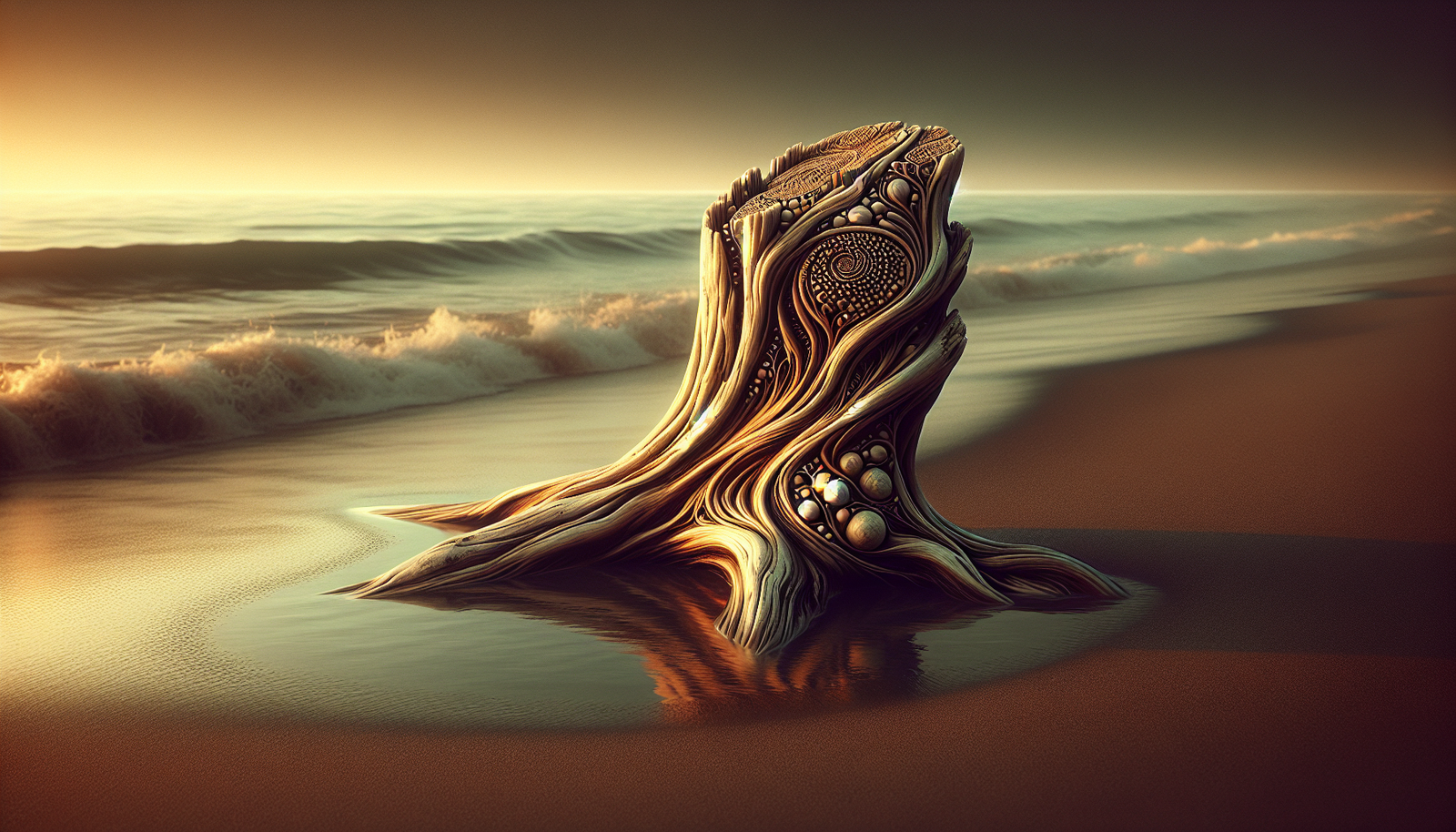
Creating with Driftwood
If you’re feeling creative and inspired by the potential of driftwood, there are numerous projects you can undertake. Whether you’re a seasoned craftsman or a novice, driftwood offers a flexible medium suited to a variety of skill levels.
Simple DIY Projects
For those new to working with driftwood, start with simple projects:
- Driftwood Garland: String together small pieces to create a natural garland that can adorn your home.
- Votive Candle Holder: Craft a simple holder using smaller driftwood pieces bound together to hold votive candles.
Intermediate Projects
For those with some experience, try these intermediate projects:
- Driftwood Lamp Base: Incorporate driftwood into your lighting fixtures for a unique, rustic appeal.
- Photo Frames: Use driftwood to create bespoke frames that capture memories.
Advanced Projects
Experienced artisans can challenge themselves with more complex works:
- Furniture Construction: Design and build furniture pieces utilizing larger driftwood planks, combining with other materials like metal or glass.
- Intricate Sculptures: Craft detailed sculptures that showcase driftwood’s natural form, leveraging its twists and whorls for artistic effect.
The Future of Driftwood Art
As the world becomes increasingly aware of the need for sustainable practices, driftwood art and usage will likely continue to grow in popularity. Its natural beauty, coupled with the story each piece carries, makes it an attractive choice for those looking to incorporate more ecologically-minded practices into their lives.
Driftwood and Environmental Awareness
Using driftwood promotes awareness about nature and environmental conservation. By choosing materials like driftwood, there’s a move towards reducing waste and appreciating naturally sourced elements.
Innovation in Driftwood Craftsmanship
Artists and designers will continue to explore innovative ways to use driftwood in their creations. There is potential in collaborating with technology, such as using 3D scanning and printing to enhance or replicate patterns found in driftwood, merging the organic with the digital.
Conclusion
Driftwood, with its noble journey from forest to sea and then into our lives, represents far more than a simple piece of wood. It is emblematic of nature’s artistry, endurance, and the continuous cycle of transformation. Whether adorning your living room, supporting eco-friendly practices, or inspiring your next creative endeavor, driftwood offers endless possibilities and continues to captivate those who appreciate its understated elegance. So the next time you encounter a piece of driftwood, consider the journey it has taken, and imagine the stories it might tell.
